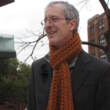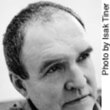The 99% invisible city: a field guide to the hidden world of everyday design
Description
More Details
9780358396369
9780358125020
Similar Titles From NoveList
Similar Authors From NoveList
Published Reviews
Booklist Review
Based on the podcast, 99% Invisible, this book highlights the underappreciated aspects of our built environment, from urban oddities like a traffic light in Syracuse, New York, that stacks green above red in a display of Irish pride to the inflatable figures that writhe outside of car dealerships. Each curiosity is discussed in conversational, bite-size entries. Fans of Mars and Kholstedt's podcast will find the stories familiar, though they've been trimmed down and are accompanied by Patrick Vale's beautiful tricolor illustrations. The book is organized into six thematic chapters with titles like "Inconspicuous" and "Infrastructure," but Mars and Kohlstedt encourage readers to find their own way through the book, comparing that approach to "desire paths," spontaneous trails shaped by pedestrians rather than planners. This analogy is a good one, encouraging readers to discover the unsung aspects of their surroundings, wherever they may be. Though the entries tend to offer examples from big cities like Philadelphia and Oakland, phenomena like utility codes and recycled brick are found in many places, making The 99% Invisible City a field guide for anywhere.
Kirkus Book Review
A user-friendly guide to all the overlooked things that make urban civilization tick. If you're an infrastructure nerd, a reader of David Macauley, Kate Ascher, or Brian Hayes, then you know that under the sidewalks of your town or city lies an endlessly complex world of pipes, cables, wires, and tunnels. If you want to understand the language spoken in that world, then this book is for you. Building from their popular podcast of the same name, Mars and Kohlstedt explore the occult grammar of the city, much of it hiding in plain sight. What are those boxes at eye level that you see on so many buildings? Well, "firefighters essentially have a skeleton key that opens all of the boxes in their area." Within a "Knox box" is in turn a copy of the master key for any given building. How is it that one can breathe inside New York City's Holland Tunnel, which burrows under the Hudson River? The authors explain the process and note that when it was built, using air shafts and aboveground ventilation towers, the air quality in the tunnel was better than that out on the street, adding, "to be fair, that is setting quite a low bar." Numerous other urban elements are grist for the authors' amiably churning mill: Those metal stars on the fronts of old brick buildings are the ends of truss rods that prevent the walls from sagging; things are named as they are via complex bureaucratic interactions; the pedestrian-friendly city that allows e-scooters becomes less pedestrian-friendly. Mars and Kohlstedt operate without an agenda other than to share their enthusiasm for urban design ("You can learn so much from reading sidewalk markings--especially when they're spelled right"), and there's a pleasant and useful lesson on every page. The ideal companion for city buffs, who'll come away seeing the streets in an entirely different light. Copyright (c) Kirkus Reviews, used with permission.
Booklist Reviews
Based on the podcast, 99% Invisible, this book highlights the underappreciated aspects of our built environment, from urban oddities like a traffic light in Syracuse, New York, that stacks green above red in a display of Irish pride to the inflatable figures that writhe outside of car dealerships. Each curiosity is discussed in conversational, bite-size entries. Fans of Mars and Kholstedt's podcast will find the stories familiar, though they've been trimmed down and are accompanied by Patrick Vale's beautiful tricolor illustrations. The book is organized into six thematic chapters with titles like "Inconspicuous" and "Infrastructure," but Mars and Kohlstedt encourage readers to find their own way through the book, comparing that approach to desire paths, spontaneous trails shaped by pedestrians rather than planners. This analogy is a good one, encouraging readers to discover the unsung aspects of their surroundings, wherever they may be. Though the entries tend to offer examples from big cities like Philadelphia and Oakland, phenomena like utility codes and recycled brick are found in many places, making The 99% Invisible City a field guide for anywhere. Copyright 2020 Booklist Reviews.


































